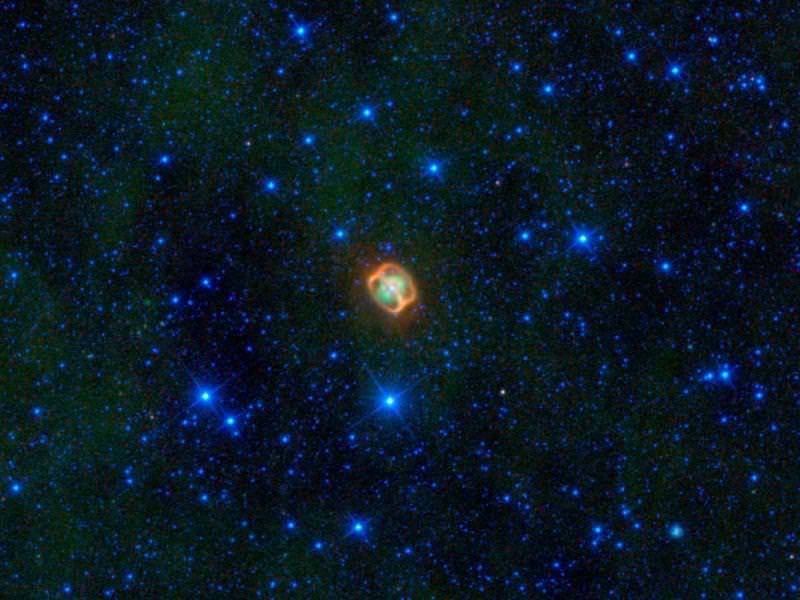http://www.universetoday.com/79244/wise-captures-a-glowing-cylinder-in-space/#more-79244 wrote:
WISE Captures a Glowing Cylinder in Space
Posted in: Astrophotos, Missions by Nancy Atkinson (No Comments »)
It’s not like we’ve never seen the planetary nebula NGC 1514 before, but we’ve never seen it though WISE’s infrared eyes, until now. And in a stunning surprise, cylindrical rings appear to be encircling the dying star, like a neon-lit carousel, or perhaps like rolling tire surrounding a glowing blob. “I just happened to look up one of my favorite objects in our WISE catalogue and was shocked to see these odd rings,” said Michael Ressler, a member of the WISE science team at JPL. “This object has been studied for more than 200 years, but WISE shows us it still has surprises.
Space station from the movie 2001: A Space Odyssey.
At first glance the rings look like the double-ringed space station in the movie 2001: A Space Odyssey. (Too bad the Bad Astronomer beat me to that likeness. He also compared it to a tuna can.)
Other people see different things in this image.
“I am reminded of the jellyfish exhibition at the Monterey Bay Aquarium — beautiful things floating in water, except this one is in space,” said Edward (Ned) Wright, the principal investigator of the WISE mission at UCLA, and a co-author of a paper on the findings, reported in the Astronomical Journal.
Here’s what NGC 1514 looks like in visible light from a ground observatory:
WISE was able to spot the rings for the first time because their dust is being heated and glows with the infrared light that WISE can detect. In visible-light images, the rings are hidden from view, overwhelmed by the brightly fluorescing clouds of gas.
The object is actually a pair of stars, seen as a single dot at the center of the blue orb. One star is a dying giant somewhat heavier and hotter than our sun, and the other was an even larger star that has now contracted into a dense body called a white dwarf. As the giant star ages, it sheds some its outer layers of material. An inner shell of ejected material is seen in bright, light blues. An outer shell can also be seen in more translucent shades of blue.
This planetary nebula is also called the “Crystal Ball” nebula, and Ressler said although NGC 1514′s structure looks unique, is probably similar in overall geometry to other hour-glass nebulae, such as the Engraved Hourglass Nebula.
The structure looks different in WISE’s view because the rings are detectable only by their heat; they do not fluoresce at visible wavelengths, as do the rings in the other objects.
The WISE science team says that more oddballs like NGC 1514 are sure to turn up in the plethora of WISE data — the first batch of which will be released to the astronomical community in spring 2011.>>

